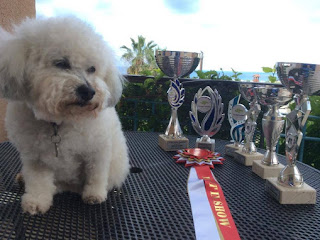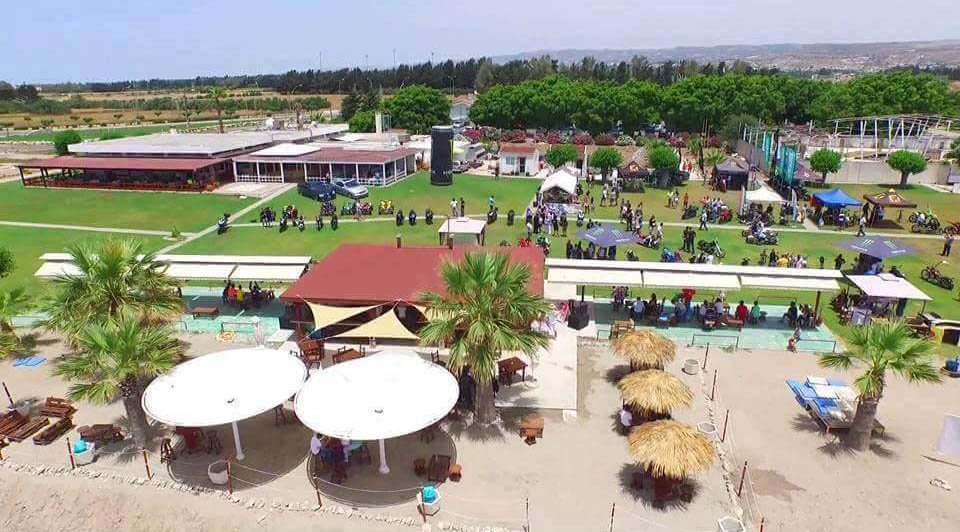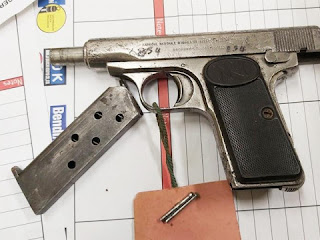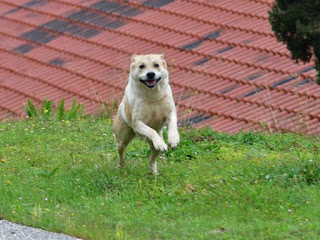Barbaros, a Seismographic Norwegian company, was acquired by Turkey in 2013 and was originally sent, mainly with a Norwegian crew to the Black Sea. Until then, Turkey was challenging Cyprus in the presence of the second generation seismographic Piri Reis, which had been coming and going within the Cypriot EEZ since the end of 2010 when our country began its first drilling in "Aphrodite" in block 12.
2013- At the end of 2013 Turkey brought Barbaros into the Eastern Mediterranean, with the first Navtex for seismographics – valid until the end of February 2014 – covering most of the maritime area between the northern coasts of Cyprus and the southern coast of Turkey, apparently sending the "message" that the area between occupied Cyprus and Turkey is under its control. At the same time, it also showed its intentions by also monitoring the reaction of the Republic of Cyprus, but also of Europe and the whole world, extending a section of the seismographic and off Pyrgos Tillyria, up to Argaka, leaving out the zone of territorial waters of the Republic of Cyprus from the height of the green line and further south.
The seismographic Barbaros (BARBAROS HAYREDDINPAŞA) was restored again north of Cyprus, but further east this time with the main objective of the Gulf of Mersina and "respecting" the area that was committed with another Navtex, outside the territorial waters of the Republic of Cyprus, although of course it wanted to show the differentiation from the occupied and not that it recognizes and respects the Republic of Cyprus.
2014 - This activity lasted from July 16 to August 27, 2014. But activity in the same area was extended until early October 2014.
The first most intense provocative activity, south of Cyprus, within the Cypriot EEZ and registered sea parcels of the Republic of Cyprus, came in October, when with illegal Navtex Turkey committed for seismographic surveys a large area from side to side south of the coast of Cyprus for the period 20 October until 30 December 2014. In fact, the accompanying ships were also Norwegian, with the crews of both the support ships and the Norwegian scientific crew of Barbaros leaving, following moves by the Republic of Cyprus and the threat of legal prosecution.
Over the next few weeks, seismographic experts followed a parody of seismographics, which they considered to be a completely wrong procedure that would not work, apparently because, at the time, only the trained but inexperienced Turkish personnel stayed on the seismographic vessel. The consultation with the owner company – turkey was renting the ship at the time – was like the treatment of seismographs in Norway. Later Turkey extended the rental period and eventually bought Barbaros.
2015- This year the Turks made a new climax to the challenges. Turkey, with a new illegal Navtex, sent Barbaros again south of Cyprus, this time to a maritime area south of Limassol, which also covered part of the underwater conditions of Eratosthenes, but also areas for which there was considerable interest in drilling by companies licensed by the Republic of Cyprus, such as the ENI-Kogas consortium. Illegal Turkish activity in this region lasted from January to April 2016. It should be noted that part of the area where apparently previously not properly seismographically was done was also covered.
From mid-April to mid-May 2015, Barbaros returns to resume seismographically, in a limited area of the Gulf of Mersina, activity that was extended until September 2015, apparently because they were aware of potential for deposit, since Turkey later drilled there, but to no avail.
2016- In the first half of 2016, we did not have an appearance of the Turkish seismographic within the Cypriot EEZ after it was sent to the Black Sea, but this lasted until April 2017.
2017- In April 2017 Barbaros returned to the area, where after a new illegal Navtex, it proceeded with seismographically in Famagusta Bay, up to the height of the Cape of Apostle Andrea.
In July 2017, Turkey culminated in serious challenges by irregularly tying a large marine area west of Paphos for seismographic surveys with Barbaros that lasted until the end of that year. It should be noted that Turkey has since carried out three illegal drilling operations within the Cypriot EEZ, with the third still under way.
2018- From the end of 2017 until March 2018, Barbaros was again sent to a large area between the Karpasia Peninsula and the Turkish coast.
From April to July 2018, they send Barbaros for seismographic northeast of Cyprus from the cape of Ap. Andrea up to the Bay of Alexandria and the border with Syria. The presence of the Turkish seismographic in the same area extended in time until September, with Barbaros literally licking even the rocks in front of ap. Andrea.
Eight drilling rigs on foreign land
Violations of the sovereignty of the Republic of Cyprus by Turkey culminated in literally pirate acts in May 2019 in the Cypriot EEZ and have continued continuously ever since, without repercussions.
Following Turkey's threats to drill in the Cypriot EEZ in October 2018, it started the first drilling with the Fatih drilling rig, but did not enter areas of sovereign rights in Cyprus. The Turkish vessel drilled off the Gulf of Antalya.
The first drilling in foreign waters, a purely pirated operation, began within the Cypriot EEZ from Fatih on 8 May 2019. Seven more drillings followed to date, of which in two cases the movement of the drilling rig from the first drilling rig to the second was a few hundred metres away and is considered to be in the same target.
In particular, three illegal drillings were drilled south of the Karpasia peninsula, about 20 km from the coast. The two took place in close proximity to each other and one further east towards the cape of Apostle Andreas.
Another, illegal drilling, took place in block 8 in the Peri-Eratosthene ring, to the point where ENIA had previously planned to drill.
Three other illegal drilling operations - two of which are very close - were carried out by Turkey west of Cyprus, within the Cypriot EEZ.
The Fatih drilling rig left the eastern Mediterranean at the end of April 2020 to drill in the Black Sea. This was followed by new illegal drilling from Yavuz, within part 7 of the Cypriot EEZ, all up to and without any positive results. On 20 April 2020, Yavuz started a new illegal drilling, in block 6, near the boundary with block 7 of the Cypriot EEZ. With successive irregular Navtex, Turkey has extended drilling activity to this target, an activity that continues to this day.
Last week, a Turkish official publicly stated that natural gas flows have been detected in drilling in the eastern Mediterranean which are being further investigated, suggesting that Turkey estimates that it is close to discovering a deposits in block 6 of the Cypriot EEZ, since it is not carrying out any more drilling in the eastern Mediterranean. Its qualitative characteristics, i.e. whether they are qualitatively and quantitatively exploitable, will judge not only the form of the continuation of Turkey's pirate activity, but will also have a significant impact on political developments.
Challenges to licensed seascapes
Unhindered Turkey continues and extends violations of international law and its pirate activity, then bringing Barbaros in August 2019 east of the previous regions also south of Cyprus to licensed parts of the Cypriot EEZ. The peak of the challenges continued in 2020, since from the first days of the year Turkey sent Barbaros for seismographics also to licensed sea fields of the Cypriot EEZ, southeast of Cyprus up to the height of Cape Kavo Greco. There he carried out illegal seismographics throughout the months when the world faced the first wave of the pandemic.
This was followed, on 21 July, by the culmination of the political crisis due to the "Turkey-Libya agreement but also the Greece-Egypt agreement (which made Erdogan furious that saw his methods fall apart), the emergence of the "brother" of the Barbaros seismograph acquired by Turkey and active mainly in the Black Sea, Oruc Reis. With irregular Navtex Turkey committed by pouring oil on the fire and warships in the area, its second seismographic, violating both the continental shelf of Greece and that of Cyprus (overlapping area in which it had already carried out seismographic surveys). The result was tension in the area.






















